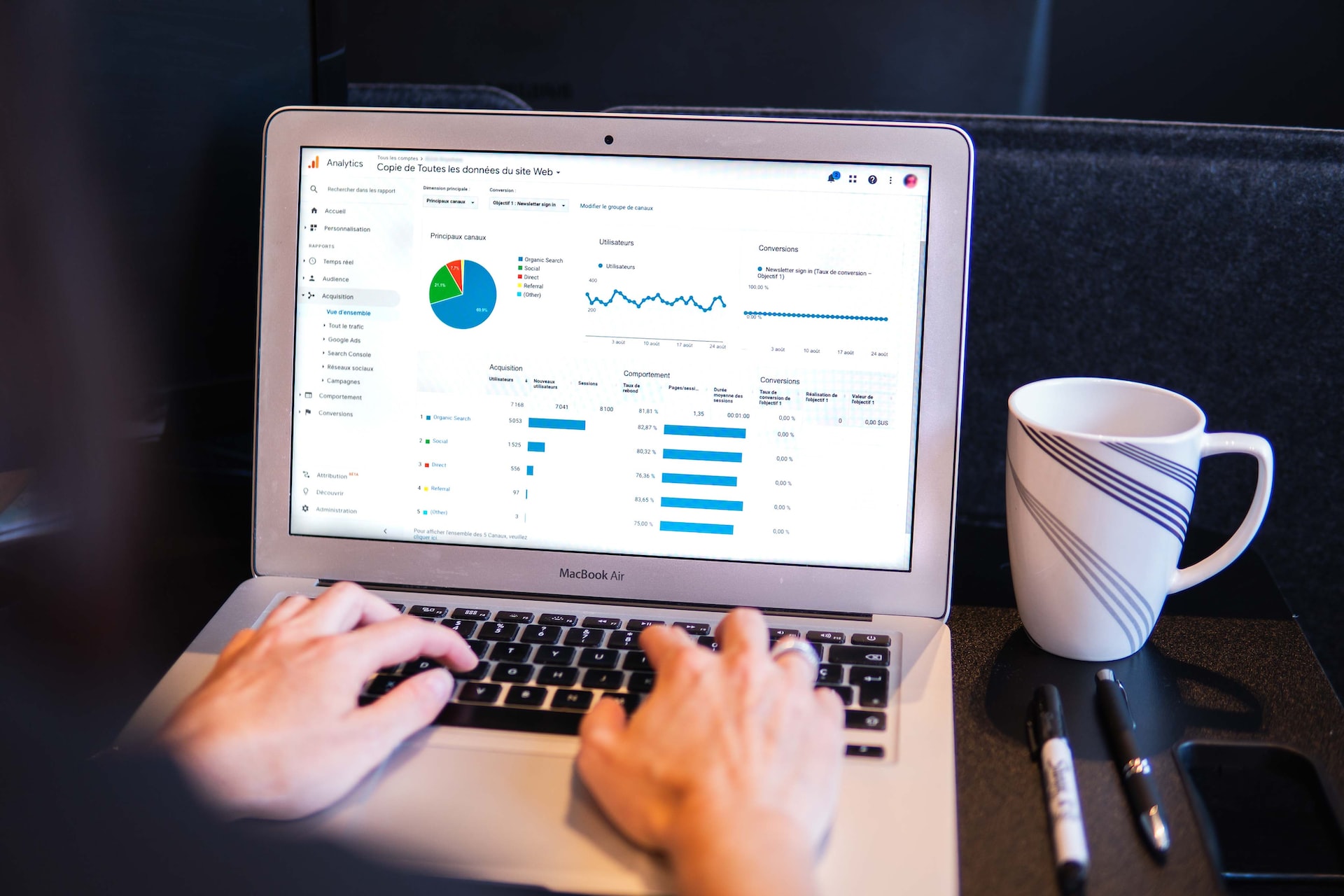How Continuous Optimization Transforms Your Google Ads Strategy

In the digital marketing, Google Ads stands out as a powerful tool for driving traffic, generating leads, and boosting sales. However, more than simply launching a campaign is required. Continuous optimization is crucial to truly reap the benefits and maximize your return on investment (ROI). Working with a google ads consultant can make this process smoother and more effective, ensuring your strategies remain on point. This process involves regularly refining and adjusting your strategy to ensure they remain effective and efficient. Here, we explore the top five ways continuous optimization can transform your Google Ads strategy.
Regularly Update Keywords
 Keywords are the backbone of any Google Ads campaign. Regularly updating your keyword list is essential for maintaining relevance and targeting the right audience. Use tools like Google Keyword Planner to identify new, trending keywords and eliminate those underperforming. Additionally, consider long-tail keywords with lower competition but can drive highly targeted traffic. Continuous keyword optimization ensures your ads appear in front of the most interested and relevant audiences, improving click-through rates (CTR) and conversion rates.
Keywords are the backbone of any Google Ads campaign. Regularly updating your keyword list is essential for maintaining relevance and targeting the right audience. Use tools like Google Keyword Planner to identify new, trending keywords and eliminate those underperforming. Additionally, consider long-tail keywords with lower competition but can drive highly targeted traffic. Continuous keyword optimization ensures your ads appear in front of the most interested and relevant audiences, improving click-through rates (CTR) and conversion rates.
A/B Testing Ad Copy
Ad copy plays a significant role in attracting clicks and conversions. A/B testing, or split testing, involves running two versions of an ad simultaneously to see which performs better. Test headlines, descriptions, and calls to action to determine what resonates most with your audience. Continuously experimenting and refining your ad copy can enhance engagement and drive more conversions, ultimately maximizing your ROI.
Optimizing Bidding Strategies
Google Ads offers various bidding strategies, from manual CPC (cost-per-click) to automated options like target CPA (cost-per-acquisition) and ROAS (return on ad spend). Continuous optimization involves reviewing and adjusting your bidding strategies to ensure they align with your campaign goals. For example, if your primary objective is to increase conversions, you might switch to a target CPA bidding strategy. Regularly monitoring performance and adjusting can help you achieve better results without overspending.
Enhancing Landing Pages
The effectiveness of your Google Ads campaign continues after a click. The landing page experience is crucial in converting visitors into customers. Ensure your landing pages are optimized for speed, mobile-friendliness, and relevance to the ad content. Regularly update and test elements such as headlines, images, and calls to action to see what drives the highest conversion rates. An optimized landing page improves user experience, reduces bounce rates, and increases ROI.
Utilizing Audience Targeting
 Google Ads allows you to target specific audiences based on demographics, interests, and behaviors. By continuously refining your audience targeting, you can ensure your ads reach the most relevant users. Use Google Analytics and other tools to analyze audience data and adjust your targeting parameters accordingly. For instance, you might discover that a particular age group or geographic location is converting better than others. Tailoring your ads to these insights can significantly enhance your campaign’s effectiveness.
Google Ads allows you to target specific audiences based on demographics, interests, and behaviors. By continuously refining your audience targeting, you can ensure your ads reach the most relevant users. Use Google Analytics and other tools to analyze audience data and adjust your targeting parameters accordingly. For instance, you might discover that a particular age group or geographic location is converting better than others. Tailoring your ads to these insights can significantly enhance your campaign’s effectiveness.
Continuous optimization is the cornerstone of a successful Google Ads strategy. By regularly updating keywords, A/B testing ad copy, optimizing bidding strategies, enhancing landing pages, and refining audience targeting; you can maximize your ROI and achieve sustained growth. Remember, the digital marketing landscape constantly evolves, and staying ahead requires a commitment to ongoing improvement and adaptation. Embrace continuous optimization, and watch your Google Ads campaigns soar to new heights.0…


 Studying what keywords your competitors are targeting makes you stronger. Why? Well, you can gain various valuable insights and identify opportunities for your own website by doing so. But how? Once you have a list of competitors, you need to analyze their content and see which keywords they are using frequently. Tools like SEMrush and Ahrefs can be incredibly helpful in this process. They provide data on organic keywords, search volume, and even backlinks that your competitors have acquired. This information will give you a clearer picture of what’s working for them and allow you to strategize accordingly.
Studying what keywords your competitors are targeting makes you stronger. Why? Well, you can gain various valuable insights and identify opportunities for your own website by doing so. But how? Once you have a list of competitors, you need to analyze their content and see which keywords they are using frequently. Tools like SEMrush and Ahrefs can be incredibly helpful in this process. They provide data on organic keywords, search volume, and even backlinks that your competitors have acquired. This information will give you a clearer picture of what’s working for them and allow you to strategize accordingly. Last but not least, understanding what users are searching for and why they are searching for it can help you craft thoughtful content that meets their needs and drives
Last but not least, understanding what users are searching for and why they are searching for it can help you craft thoughtful content that meets their needs and drives 
 Without a doubt, the main reason why many eCommerce store owners choose to use Google Ads is because of the potential for high ROI. Considering how competitive the online market can be, it’s essential to ensure you get the most out of your advertising budget. With Google Ads, you only have to pay when someone clicks on your ad, meaning that if no one clicks on your ad, you don’t have to pay. This means that your advertising budget is being used more efficiently, and you can get a better return on your investment.
Without a doubt, the main reason why many eCommerce store owners choose to use Google Ads is because of the potential for high ROI. Considering how competitive the online market can be, it’s essential to ensure you get the most out of your advertising budget. With Google Ads, you only have to pay when someone clicks on your ad, meaning that if no one clicks on your ad, you don’t have to pay. This means that your advertising budget is being used more efficiently, and you can get a better return on your investment.
 Ultimately, the greatest benefit of using Google Ads is that it can help you get more leads and customers. Depending on the goals and budget of your campaign, you could increase the number of users who visit your website exponentially. By targeting specific keywords related to your product or service, you can attract people actively searching for what you offer. Not only that, but you can also target your ads to people who have already visited your website and may be more likely to convert.
Ultimately, the greatest benefit of using Google Ads is that it can help you get more leads and customers. Depending on the goals and budget of your campaign, you could increase the number of users who visit your website exponentially. By targeting specific keywords related to your product or service, you can attract people actively searching for what you offer. Not only that, but you can also target your ads to people who have already visited your website and may be more likely to convert.
 One of the most important Google ranking factors is the quality of your content. Your content must be well-written, informative, and relevant to your
One of the most important Google ranking factors is the quality of your content. Your content must be well-written, informative, and relevant to your 
 So how do you know if your marketing strategy is working? An excellent place to start is by looking at your website traffic. If you see an uptick in the number of visitors to your site, that’s a good sign that your marketing efforts are paying off. To get even more insights into how your marketing is performing, look at where your website visitors are coming from. Are they coming from your social media posts? Your email marketing campaigns? Or perhaps they’re finding you through a search engine? Knowing where your website visitors are coming from will give you a better idea of which marketing channels are most effective for reaching your target audience.
So how do you know if your marketing strategy is working? An excellent place to start is by looking at your website traffic. If you see an uptick in the number of visitors to your site, that’s a good sign that your marketing efforts are paying off. To get even more insights into how your marketing is performing, look at where your website visitors are coming from. Are they coming from your social media posts? Your email marketing campaigns? Or perhaps they’re finding you through a search engine? Knowing where your website visitors are coming from will give you a better idea of which marketing channels are most effective for reaching your target audience. Another sign that your marketing
Another sign that your marketing 

 If you’re looking to enhance your
If you’re looking to enhance your 






